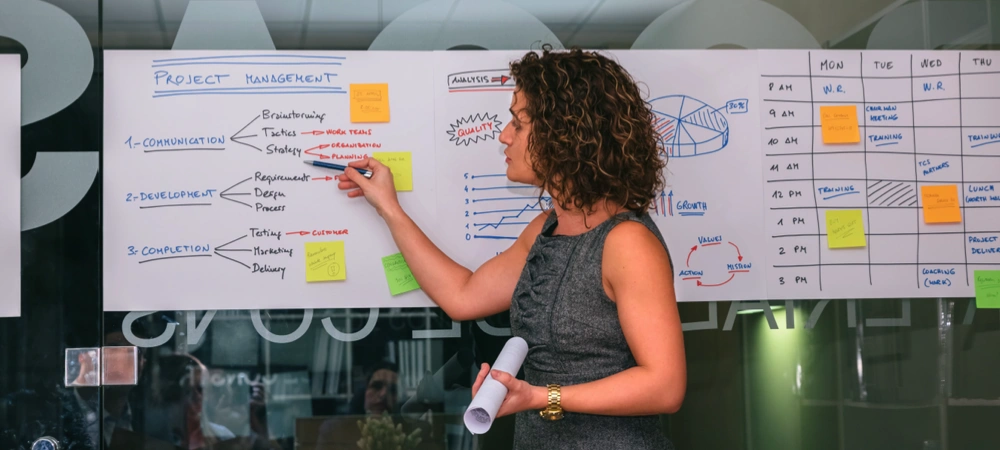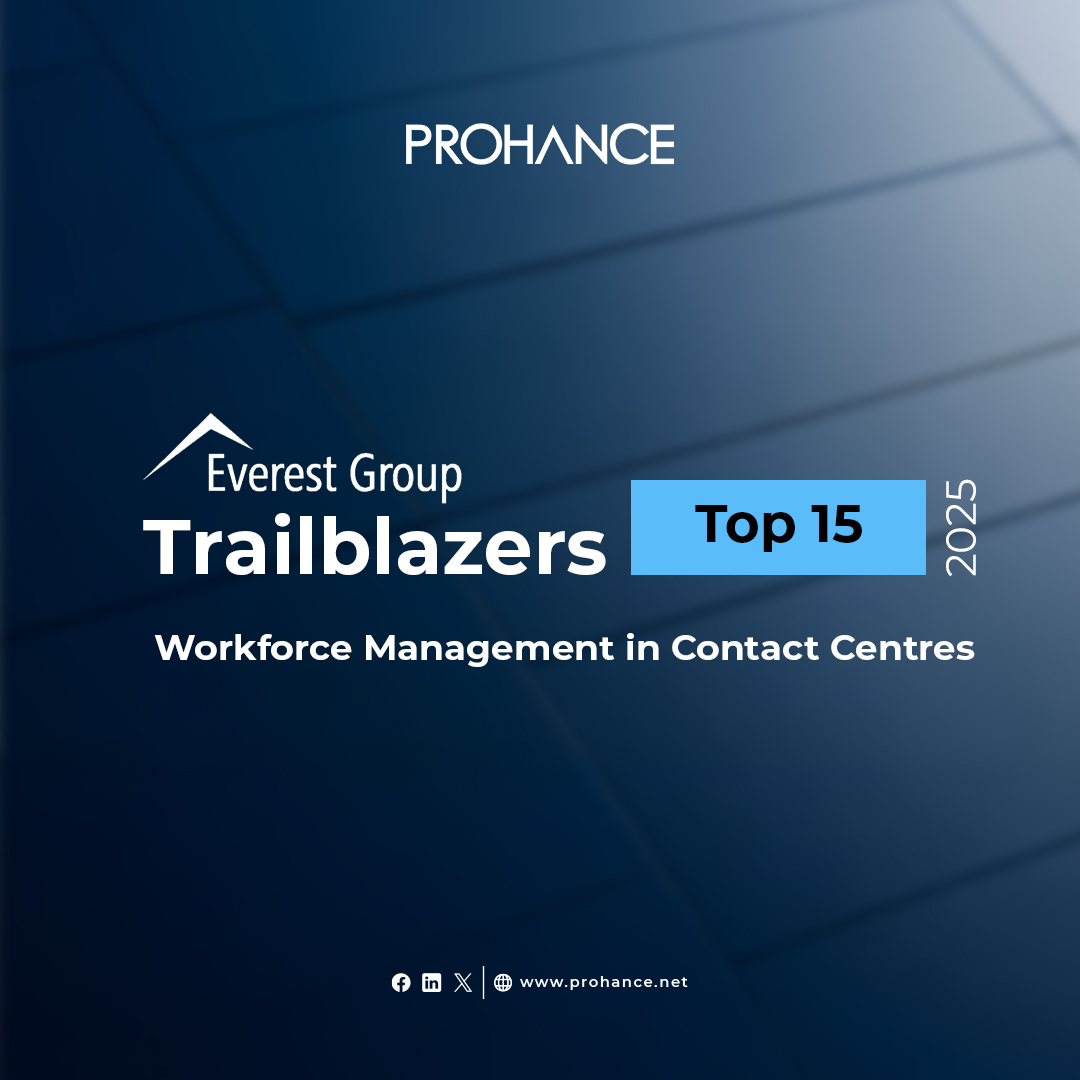What Is Project Management? Everything You Need to Know
- What Is Project Management?
- What are the most common elements of project management?
- What are the methodologies involved in project management?
- Advanced project management methodologies
- What are The advantages of using Project Management Tools?
- How ProHance Can Help in Advanced Project Management?
- Frequently Asked Questions
Successful project management is crucial for organizations looking to remain competitive and produce consistent outcomes. In the fast-paced business world, a clear-cut project management system works to differentiate successful teams from unsuccessful teams of teams struggling with delays, increasing costs, and misaligned objectives.
Without an organized method, projects can get into trouble with a rapidity that includes missed deadlines, overrun costs, a lack of coordination between the team members, and unhappy stakeholders. These issues not only interfere with delivery but also affect your business performance over the long term.
So what is project management, and why does it matter? What are the essential elements, and how can the proper project management tool or software to manage project timelines assist you in executing with certainty?
Let’s discover the answers.
What Is Project Management?
Project management represents the dynamic orchestration of people, processes, and resources to achieve specific objectives within a defined timeframe.
It offers a structured framework, clear communication channels, and meticulous planning, propelling your organization toward successful project outcomes.
History and evolution of project management
Project management has existed since humanity’s earliest endeavors – from the construction of the Great Pyramids to the exploration of new lands. However, it was first recognized as a discipline in modern industry during the 20th-century industrial revolutionization.
Why Is Project Management Important?
Good project management is more than just tracking tasks. It’s what delivers results, improves teamwork, and facilitates project outcomes and team well-being. Here’s why it’s important:
Provides direction and leadership to projects
A committed project manager directs with intention, aligns objectives, and makes sure each member of his/her team knows his/her place in the larger scheme.
Aligns and engages stakeholders
A strong project management system connects stakeholders, encourages accountability, and keeps everyone focused on shared outcomes.
Improves goal clarity and return on investment
Project managers evaluate whether the project is meeting objectives, especially in fast-changing environments that demand agility and coordination.
Supports cross-functional collaboration
Using tools for online project management, managers connect specialized teams, streamline communication, and bridge knowledge gaps.
Translates complexity into action
A project manager simplifies technical or complex ideas into structured workflows using the right software to manage project tasks.
Manages risk and shifting priorities
Whether using agile project management workflow or traditional models, project managers anticipate risks, adjust plans, and maintain momentum.
Empowers teams to deliver their best work
Good project managers lead through influence, not authority, motivating individuals while staying focused on deadlines and outcomes.
Boosts workflow efficiency and quality
Embracing project planning in software project management helps teams reduce delays, improve accuracy, and deliver consistently high-quality results.
What are the reasons that lead to project failure?
Before we discuss in detail about project management, let’s take a look at the reasons why project management fails:
- The lack of defined project objectives and milestones is the reason why 37% of the projects fail.
- 46% of firms have accepted that they do not understand the need or importance of project management.
- According to a report published by the University of Missouri-St. Louis, one-third of projects fail due to the absence of senior management involvement in critical project decisions.
- Yet another leading organization highlights that the 3 primary causes of project failure include inconsistent execution, lack of continuous team improvement and poor scalability.
With proper project management, you can seamlessly iron out the factors that translate into project failure.
So, how exactly are various industries adopting various elements of project management? Let’s take a look!
How do various industries implement project management principles?
- Healthcare: Project management plays a pivotal role in the systemic implementation of life-saving initiatives such as vaccine distribution to hospital expansions alongside limited resource management.
- Marketing and advertising: Project management ensures that campaigns are executed flawlessly, reaching the right audiences at the right time.
- Finance: Project management helps institutions navigate complex regulatory changes and execute strategic investments effectively.
- IT and modern tech: In this rapidly innovative domain, project management ensures that product development stays on track, adheres to budgets, and meets launch deadlines.
Now that you know the relevance of project management, let’s explore the elements of project management and see how to manage a project using these elements/principles.
What are the most common elements of project management?
To successfully manage any initiative, it’s important to understand the core components of a strong project management system. These foundational elements are key to mastering how to manage a project effectively using the right project management tool or software to manage project execution. Let’s break down the most essential elements:
Scope Management
Scope management involves defining what is included in a project—and what is not. This process helps you avoid scope creep, which can derail timelines and inflate budgets. Clearly outlining deliverables ensures your team stays focused on the project’s intended goals.
Improve project scope clarity with ProHance’s Asset Optimization module.
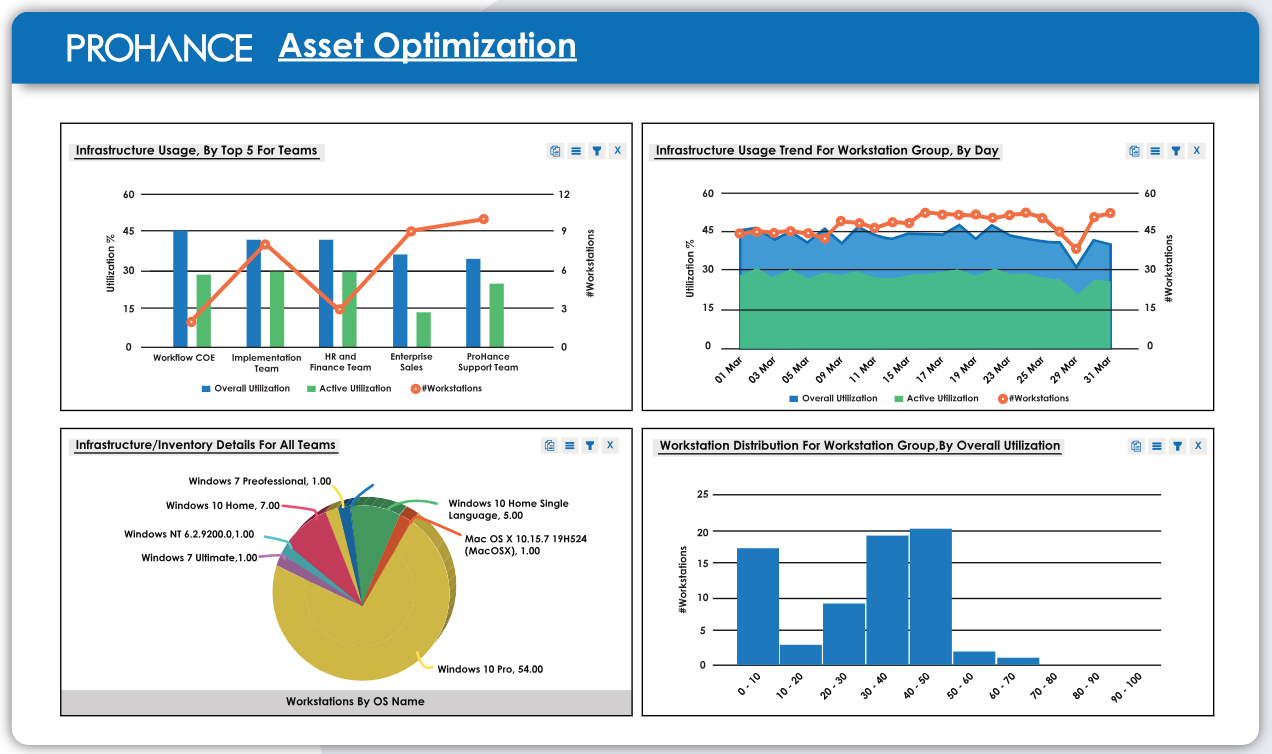
Time Management
Time management focuses on organizing and scheduling tasks to ensure the project stays on track. You’ll set realistic deadlines, identify critical paths (including in CPM project management), and track task durations to prevent delays.
Track key business and time metrics with ProHance’s Work Time module.
Read more: Why Is Time Management Important In The Workplace?
Cost Management
Cost management is all about budgeting, monitoring expenses, and controlling financial resources across the project lifecycle. Effective cost management ensures that your project remains within budget and delivers a strong return on investment.
Quality Management
Quality management ensures your project deliverables meet or exceed predefined standards. This includes setting quality benchmarks, implementing control processes, and continually improving to achieve consistent results.
Risk Management
Risk management involves identifying, analyzing, and minimizing potential risks that could affect the success of your project. Whether you’re using traditional or agile project management workflow models, managing risks early helps reduce disruptions.
Monitor cost, quality, and risk using ProHance’s advanced project analytics.
Communication Management
Strong communication is essential to any project planning in software project management. Communication management ensures timely and relevant updates are shared across teams and stakeholders to keep everyone aligned and informed.
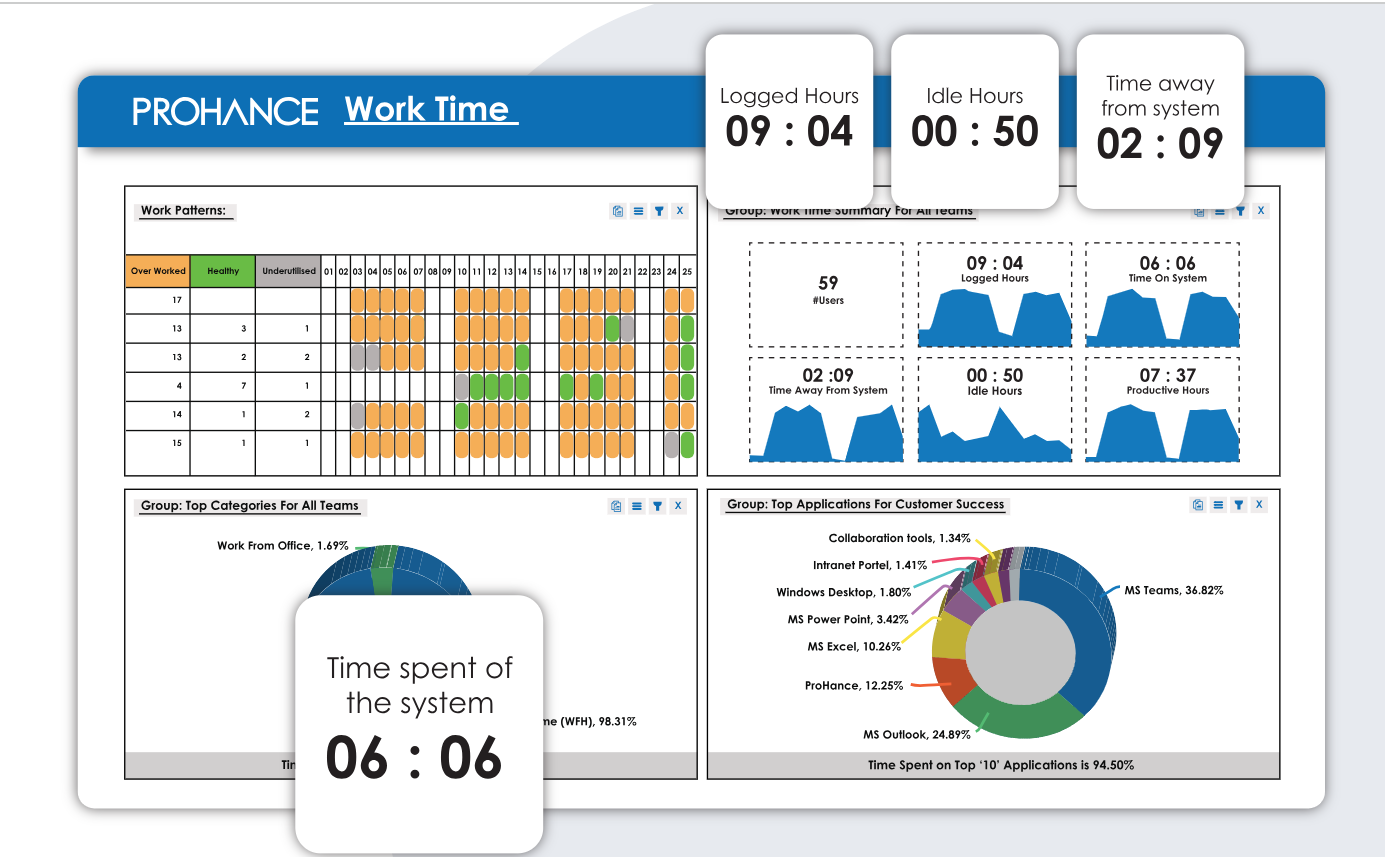
Compare key business metrics against time metrics with the work time module.
Cost Management
Cost management encompasses everything related to the finances of your project throughout the project’s lifecycle– from budgeting to expense monitoring and cost control. Cost management ensures financial resources are allocated wisely to prevent overspending.
Quality Management
Quality management focuses on meeting or exceeding established standards and expectations. It defines quality criteria, ensures the implementation of quality checks, and continually strives for excellence in project deliverables.
Risk Management
Risk management is the art of identifying, assessing, and mitigating potential project risks. In risk management, your team will perform proactive planning to minimize the impact of unforeseen events and uncertainties.

Manage cost, project quality and risk with ProHance’s advanced analytics
Communication Management
Communication management ensures that information flows effectively within the project team and stakeholders. It involves clear, timely, and relevant communication to avoid misunderstandings and keep everyone aligned.
What are the methodologies involved in project management?
Did you know that inefficient project management can lead to wastage of up to 12% of precious resources? To prevent it, the implementation of the correct project management methodology is essential. Utilizing a successful project management system or software to execute project tasks can assist you in deploying these methodologies successfully. The following are some of the most frequently used ones:
Waterfall Methodology
The Waterfall approach follows a linear, sequential workflow where each phase flows into the next—much like a waterfall. It’s ideal for projects with clearly defined requirements.
Pros:
- Clear, structured process
- Detailed documentation
- Well-suited for stable, predictable projects
Cons:
- Inflexible to change
- Limited stakeholder involvement until project completion
Agile Methodology
Agile breaks projects into small, iterative increments, promoting flexibility and quick adaptation. It’s highly favored in dynamic environments and supports continuous stakeholder collaboration.
Pros:
- Flexible and adaptive
- Ongoing stakeholder engagement
- Faster delivery cycles
Cons:
- Requires experienced teams
- Less formal documentation, which can cause knowledge gaps
Scrum Methodology
Scrum is a popular agile project management workflow framework designed for small, cross-functional teams. It emphasizes collaboration, transparency, and regular progress reviews.
Pros:
- Promotes efficient team collaboration
- High transparency and accountability
- Easily adaptable to changing needs
Cons:
- Defined roles can be restrictive
- Management complexity increases with larger projects
Kanban Methodology
Kanban uses visual boards to track workflow and prioritize tasks, making it easy to identify bottlenecks and improve efficiency. It’s excellent for teams seeking flexible task management.
Pros:
- Visual clarity of task status
- Enhances efficiency and focus
- Flexible and easy to adapt
Cons:
- Lacks strict structure
- Can be challenging to manage task dependencies
Lean Methodology
Lean focuses on eliminating waste and streamlining processes to maximize value. This methodology emphasizes continuous improvement and delivering what matters most to customers.
Pros:
- Removes unnecessary steps and waste
- Encourages continuous improvement
- Customer-centric approach
Cons:
- Can require significant resource investment
- May not fit all project types
Choosing the right methodology and supporting it with the best project management tool or online project management software helps your team optimize resources, improve collaboration, and successfully deliver projects on time and within budget.
Advanced Project Management Methodologies
Explore advanced project management methodologies that go beyond the basics. Each offers unique benefits and challenges, making them ideal for specific project types and complexities.
Hybrid Project Management: Combining Agile and Waterfall
For intricate projects, hybrid project management combines the rigorous planning of Waterfall with the adaptability of agile project management workflow so that you can respond to changing specifications while having control.
Critical Chain Project Management (CCPM) for Resource Optimization
CPM project management methods such as Critical Chain specialize in coordinating resource bottlenecks and buffers to limit delays and optimize overall project delivery effectiveness.
PRINCE2: A Process-Driven Framework for Large Projects
PRINCE2 (Projects IN Controlled Environments) is a standard methodology used extensively, particularly in government and large corporations, which offers an explicit framework for governance, roles, and controlled processes.
Earned Value Management (EVM) for Performance Tracking
Earned Value Management integrates scope, cost, and schedule metrics, offering objective data to track project progress and forecast outcomes accurately within your project management system.
Understanding the Project Management Lifecycle
Get a clear overview of the project management lifecycle—the essential phases every project goes through, from initiation to closure, ensuring successful project delivery.
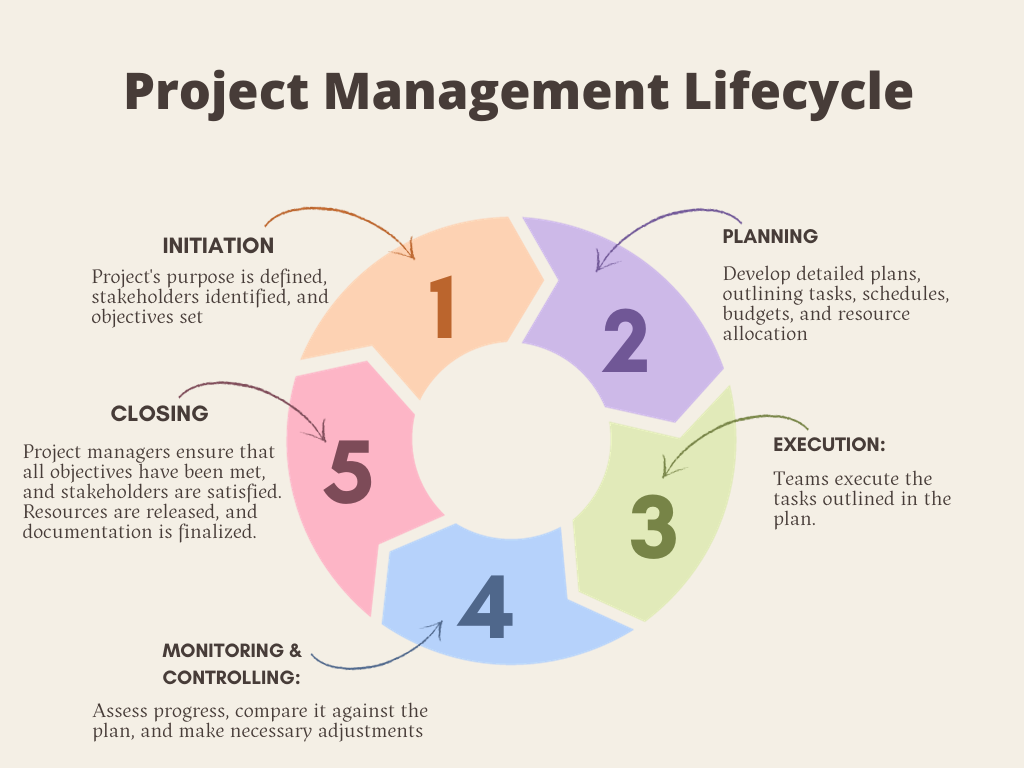
What Are the Advantages of Using Project Management Tools?
Discover how a robust project management tool or software to manage project simplifies complex tasks and boosts team productivity.
Enhanced Collaboration Through Project Management Software
With the right online project management software, your team can collaborate seamlessly, regardless of location, sharing real-time data for better communication and alignment.
Boosting Efficiency with Project Management Software
Automate repetitive tasks, reduce errors, and save time by leveraging features like task assignments, deadline reminders, and progress tracking within your project management system.
Improved Decision-Making Using Project Analytics
Access comprehensive project data and analytics through your project management tool to make faster, informed decisions on resource allocation, cost control, and risk management.
How ProHance Can Help in Advanced Project Management?
ProHance is a comprehensive workforce management platform designed to streamline every aspect of your projects.
From resource optimization to predictive analytics, real-time reporting and collaboration tools– ProHance offers a plethora of features that make project management a breeze.
Whether you’re managing a small team or a large enterprise, ProHance has you covered!!

An example of Gantt Chart template (Source)
Frequently Asked Questions
Q1: What is the basic purpose of project management?
The fundamental purpose of project management is to plan, execute, and control projects effectively to achieve specific objectives within defined constraints, such as time, cost, quality, and scope. It ensures that projects are completed efficiently and meet stakeholder expectations.
Q2: What is Six Sigma project management?
Six Sigma project management is an approach focused on improving process efficiency and quality by reducing defects and variations. It relies on data-driven decision-making and employs techniques to achieve process optimization and excellence.
Q3: What is a PMO department?
PMO stands for Project Management Office, a department within an organization responsible for standardizing and overseeing project management practices. It provides support, governance, and resources to ensure consistency and successful project execution across the organization.
Q4: What is project methodology?
Project methodology refers to a structured framework or approach that guides how a project is planned, executed, and controlled. It includes processes, tools, and techniques used to manage projects effectively, such as Waterfall, Agile, or Scrum methodologies.
Q5: What is meant by a Gantt chart?
A Gantt chart is a visual project management tool that displays project tasks or activities on a timeline. It illustrates the start and end dates of each task, dependencies between tasks, and the project’s overall schedule, providing a clear overview of project progress.
Q6: What are the benefits of using project management tools?
Project management software simplifies planning, task monitoring, and team collaboration. They enhance efficiency, minimize errors, and facilitate good decision-making. With appropriate project management software or tool to facilitate project workflows, teams can remain on track, achieve deadlines, and increase general project success.
Q7: How does ProHance support CPM project management?
ProHance extends CPM project management with real-time visibility into task duration, resource use, and critical path. It facilitates the detection of bottlenecks, scheduling optimization, and on-time delivery, allowing for simpler control of intricate projects with stringent deadlines and resource constraints.
Q8: Can I use ProHance for agile project management workflows?
Yes, ProHance facilitates agile project management workflows by offering insight into sprint cycles, team productivity, and project progress. It allows agile teams to work together, respond to change rapidly, and deliver incremental improvements, all within a flexible and data-driven project management environment.

